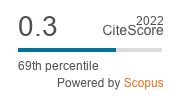- Home »
- Issues »
- 25/1 – Spring 2020 »
- Articles »
Antaios: a mythical and symbolic Hermeneutics
Abstract
The aim of my research is to define the Religious Hermeneutics that can be identified as the specific core of Antaios (1959-1971), the German journal directed by the historian of religions Mircea Eliade and the writer and philosopher Ernst Jünger. We’ll focus on the philosophical-religious interpretation of Antaios contents: the so called “mythical-symbolic hermeneutics” is probably the most interesting theoretical theme connected to the Weltanschauung of Antaios. This cultural journal could embodies a counter-philosophical perspective that is at the same time intrinsic to Western speculation. This position has been repeatedly emerged in many phases of our cultural history. I am referring to a mythical-symbolic thought, characterized by an analogical interpretation of the world, whose structure is considered as a stratification of truth levels, that are complementary ontological levels of reality. This tradition sees reality as a specific kind of totality that allows human perception to take place through the structures of myth and symbols. The theoretical unity of the project is rooted in the mythical-symbolic tradition that, starting from the religious and esoteric pre-philosophical meditations, crosses the Platonic thought, the various neoplatonisms, passes through medieval mysticism and alchemy, reappears in Romanticism and is revealed in the twentieth century by the reflections of the “thinkers of Tradition”.
With this paper I would like to communicate the main topics that from this Hermeneutics can be identified: speculations about symbol, myth, coincidentia oppositorum (coincidence of opposites), archetypes, ontological pluralism are at the core of this paradigm.
Keywords
Cite this article
Siniscalco, Luca. 2020. Antaios: a mythical and symbolic Hermeneutics Forum Philosophicum 25, no. 2 (2020): 123–139. doi:10.35765/forphil.2020.2501.8
Bibliography
“Demythologization.” Oxford Biblical Studies, accessed January 17, 2020. http://www.oxfordbiblicalstudies.com/article/opr/t94/e512. Eskridge Jr., William N. 1990. “Gadamer/Statutory Interpretation.” Faculty Scholarship Series 90 (3): 609–81. Evola, Julius. 2010. Lo Yoga della Potenza. Rome: Edizioni Mediterranee.
Altizer, Thomas. 1963. Mircea Eliade and the Dialectic of the Sacred. Philadelphia, PA: Westminster Press.
Dávila, Nicolás Gómez. 2002. Textos I. Bogotà: Villegas Editores.
Donà, Massimo. 2017. “Jünger-Evola. La potenza del ‘negativo’, tra scienza e magia.” In Studievoliani 2016, 59–78. Rome: Fondazione J. Evola-Pagine.
Eliade, Mircea. 1959. The Sacred and the Profane. The Nature of Religion. Translated by Willard R. Trask. Boston, MA: Houghton Mifflin Harcourt.
—. 1963. “Gedanken zu einem neuen Humanismus.” Antaios IV:113–9.
—. 1969. The Quest – History and Meaning in Religion. Chicago: Chicago University Press. —. 1988. Diciannove rose. Translated by Iuliana Batali Ciarletta. Milan: Jaca Book.
—. 2004. Shamanism: Archaic Techniques of Ecstasy. Translated by Willard R. Trask. Princeton: Princeton University Press.
—. 2009. Yoga: Immortality and Freedom. Translated by Willard R. Trask. Princeton, NJ: Princeton University Press.
—. 2018. The Myth of the Eternal Return. Cosmos and History. Translated by Willard R. Trask. Princeton, NJ: Princeton Classics.
Hakl, Hans Thomas. 2007. “‘L’effetto, pur non esteso, è stato profondo come quello di una sonda.’ Breve storia della rivista ‘Antaios’, curata da Mircea Eliade ed Ernst Jünger (1959-1971).” In Cenacoli. Circoli e gruppi letterari, artistici e spiritual, edited by Francesco Zambon, 247–270. Milan: Edizioni Medusa.
—. 2009. “‘Den Antaios kenne und missbillige ich. Was er pflegt, ist nicht Religio, sondern Magie!’ Kurze Geschichte der Zeitschrift ANTAIOS.” Aries 9 (2): 195–232. doi:10.1163/156798909X444824.
—. 2014. Der verborgene Geist von Eranos. Gaggenau: Frietsch Verlag.
—. 2019. “Julius Evola e ‘Antaios.’ Una storia editoriale.” In Julius Evola, Antaios (1960-1970), edited by Luca Siniscalco, 7–17. Rome: Fondazione J. Evola-Pagine.
Hedley, Douglas. 2008. Living forms of the imagination. London: T&T Clark International. Hervier, Julien. 1995. The Details of Time. Conversation with Jünger. Translated by Joachim Neugroschel. New York: Marsilio Publishers.
Husserl, Edmund. 1996a. Die Krisis der europäischen Wissenschaften und die transzendentale Phänomenologie. Hamburg: Meiner.
—. 1996b. Philosophie als strenge Wissenschaft. Frankfurt am Main: Klostermann. Jünger, Ernst. 2004. Sämtliche Werke. Vol. 12, Essays VI: Fassungen I. Stuttgart: Klett-Cotta. —. 2013. An der Zeitmauer. Stuttgart: Klett-Cotta.
—. 2015. Sämtliche Werke. Vol. 17, Essays IX: Ad hoc. Stuttgart: Klett-Cotta.
Moretti, Gianpiero. 2013. Heidelberg romantica. Romanticismo tedesco e nichilismo europeo. Brescia: Morcelliana.
Noica, Costantin. 1987. “I sette passi di Buddha. Un senso per il destino di Mircea Eliade.” In Mircea Eliade e l’Italia, edited by Marin Mincu and Roberto Scagno. Milan: Jaca Book. Olsen, Carl. 1992. The Theology and Philosophy of Eliade: A Search for the Centre. New York: St. Martin’s Press.
Otto, Rudolf. 1936. The Idea of the Holy. Translated by John W. Harvey. London: Oxford University Press.
Panikkar, Raimon. 1961. “Der Īshvara des Vedānta und der Christus der Trinität: Ein philosophisches Problem.” Antaios II: 446–55.
Rennie, Bryan S. 1996. Reconstructing Eliade. New York: State University of New York Press. Ries, Julien. 1982. Il sacro nella storia religiosa dell’umanità. Milan: Jaca Book.
Schwilk, Heimo. 2014. Ernst Jünger. Ein Jahrundertleben. Stuttgart: Klett-Cotta.
Siniscalco, Luca. 2019. “Incontri pericolosi. Per un’iconologia della fortuna in Ernst Jünger.” Narrability Journal III (1): 42–61.
Vattimo, Gianni. 2014. “Introduzione (1972). L’ontologia ermeneutica nella filosofia contemporanea.” In Verità e metodo. Milan: Bompiani. Wolff-Windegg, Philipp. 1965. “Geleitwort.” Antaios VI: iii–v.




